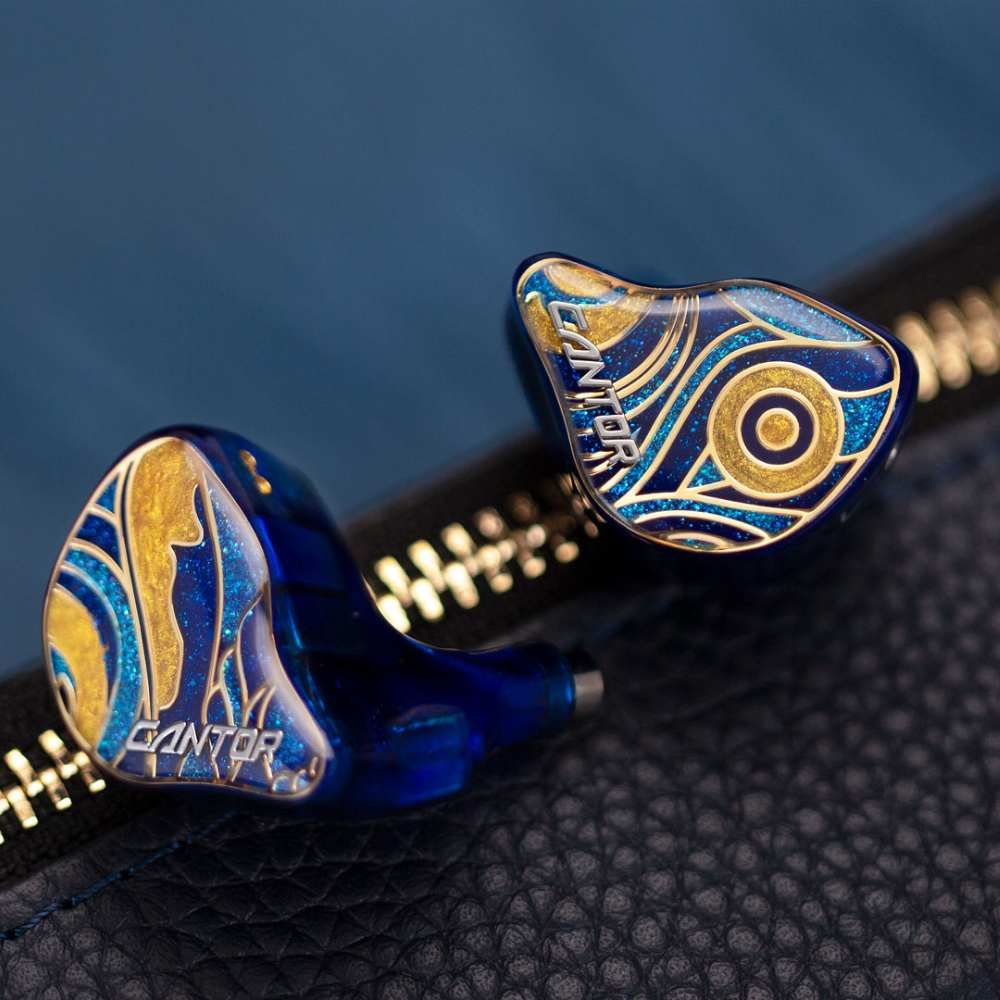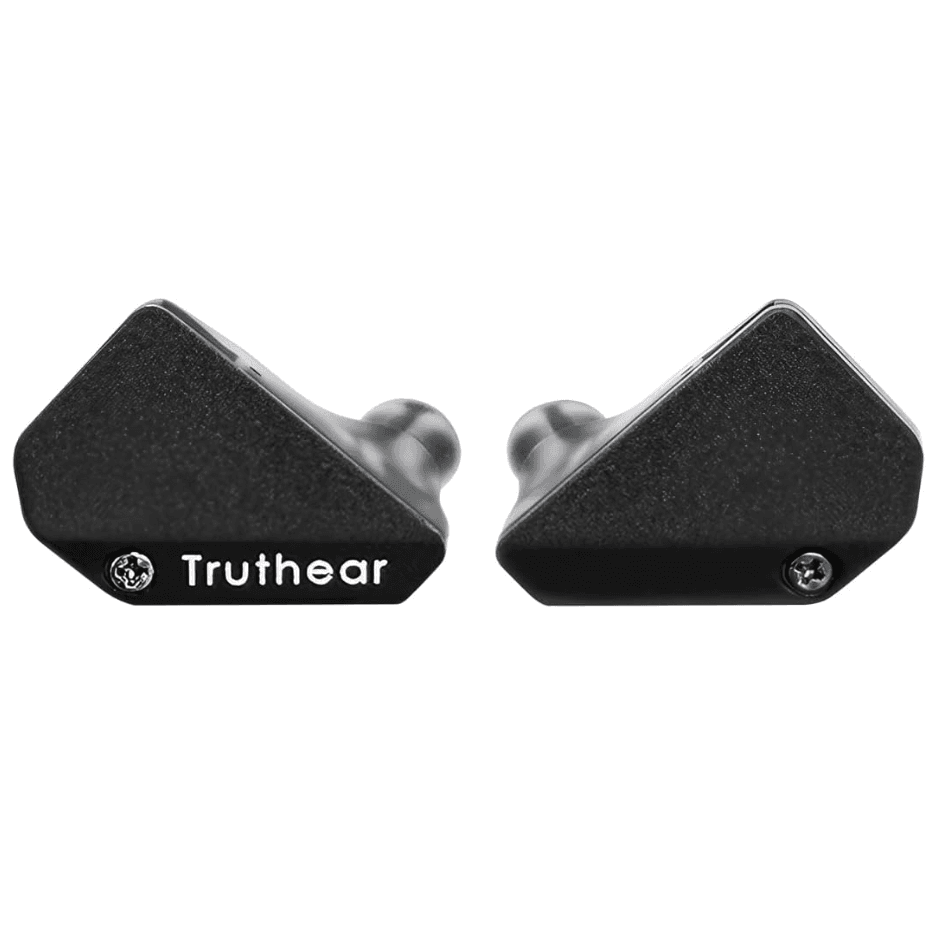Cantorvs.Hexa
Sound & Specs Comparison
Information
Both IEMs are widely regarded in the audiophile community. See how they differ in terms of sub-bass response, upper mids, clarity, and overall tonality. Spider charts and rating breakdowns included.
Objective Comparison
Facts, details, stuff.
| General Info | Cantor | Hexa |
|---|---|---|
| Brand | AFUL | Truthear |
| Country | Taiwan | China |
| IEM Description | The AFUL Cantor combines technical precision with musicality in a hybrid design. Featuring a dynamic driver for powerful bass and multiple balanced armatures for clean mids and sparkly highs, it delivers a spacious soundstage with excellent separation. Tuning leans slightly toward a balanced-bright signature, making it a solid choice for detail lovers who still want some low-end punch. | HEXA is a high-performance hybrid IEM featuring one 10mm dynamic driver and three balanced armature drivers for a clean, balanced sound. Designed with a DLP-3D printed resin cavity and metal faceplate, it combines precision engineering with comfort. The bass is deep and punchy, the mids are clean and natural, and the highs are smooth and detailed. Its medical-grade shell, reliable build, and premium silver-plated cable make HEXA a standout in its class—offering refined audio performance at an accessible price point. |
| Price Level | 500 – 1.000 | < 100 |
| Housing & Driver | ||
|---|---|---|
| Driver Config | Multi-BA | Hybrid |
| Driver Types | Balanced Armature | Balanced Armature + Dynamic Driver |
| Shell Material | – | – |
| Cable | 4Braid 5N OFC Cable | Four Stands of High-quality Silver-plated Cable |
| Technical | ||
|---|---|---|
| Freq Range | – | 8-40kHz (IEC61094, Free Field) |
| Impedance (Ω) | 20 | 20.5 |
| Sensitivity (dB) | 106 | 120 |
| Crossover | RLC Network Electronic Crossover | – |
| Platform Info | ||
|---|---|---|
| Comments | 2 | 0 |
| Visit Count | 142 | 95 |
| External Reviews | 1 | 1 |
Meta Ratings
// Nothing to compare yet.
Sound Characteristics
Hexa delivers a deeper and more extended sub-bass, reaching lower frequencies with greater authority than Cantor (9 vs 8.5). Cantor renders bass with a greater punch and separation, where Hexa sometimes feels bloated (9 vs 7.5). The bass in It feels a more physical and textured, with improved rumble and body compared to Hexa (8.5 vs 6.5). Male vocals and lower instruments sound a richer and better defined on It, unlike Hexa which can seem hollow (8.5 vs 7.5). It strikes a b better balance between presence and smoothness in the upper mids compared to Hexa (8 vs 7.5). Instruments like violins and brass are portrayed with a more brilliance on Hexa, while Cantor sounds slightly dull (8.5 vs 8). The upper treble of It extends a further, offering more sparkle and openness than Cantor (8.5 vs 7.5). Cantor creates a m wider soundstage, giving instruments more space and a better sense of placement than Hexa (8 vs 5.5). The retrieval of faint audio cues on It is a more convincing, while Hexa tends to gloss over them (8.8 vs 8.2). It keeps competing frequencies under control a more effectively, reducing sonic congestion compared to Hexa (8 vs 6). It adds s more body and density to musical notes, enriching the overall texture compared to Hexa (7.5 vs 6). Percussion and quick attacks feel overwhelmingly more physical and punchy on It, adding excitement over Hexa (8.5 vs 3.5). Hexa handles sibilant sounds s more gently, with fewer peaks and less sharpness than Cantor (10 vs 8.5). The tone quality of It feels a more organic and true-to-source than the slightly artificial flavor of Cantor (8.5 vs 7.5). It portrays textures in vocals and strings with m more realism, enhancing emotional depth over Cantor (10 vs 8).
| Cantor | Hexa | |
|---|---|---|
| Sub Bass | 8.5 | 9.0 |
| Bass | 9.0 | 7.5 |
| Bass Feel | 8.5 | 6.5 |
| Lower Mids | 8.5 | 7.5 |
| Upper Mids | 8.0 | 7.5 |
| Lower Treble | 8.0 | 8.5 |
| Upper Treble | 7.5 | 8.5 |
| Sound Stage Width | 8.0 | 5.5 |
| Detail | 8.8 | 7.5 |
| Layering | 8.3 | 8.5 |
| Masking | 8.0 | 6.0 |
| Note Weight | 7.5 | 6.0 |
| Slam | 8.5 | 3.5 |
| Sibilance | 8.5 | 10.0 |
| Timbre Color | 7.5 | 8.5 |
| Tonality | 8.8 | 9.0 |
| Texture | 8.0 | 10.0 |
Tonal Signature
// Nothing to compare yet.

